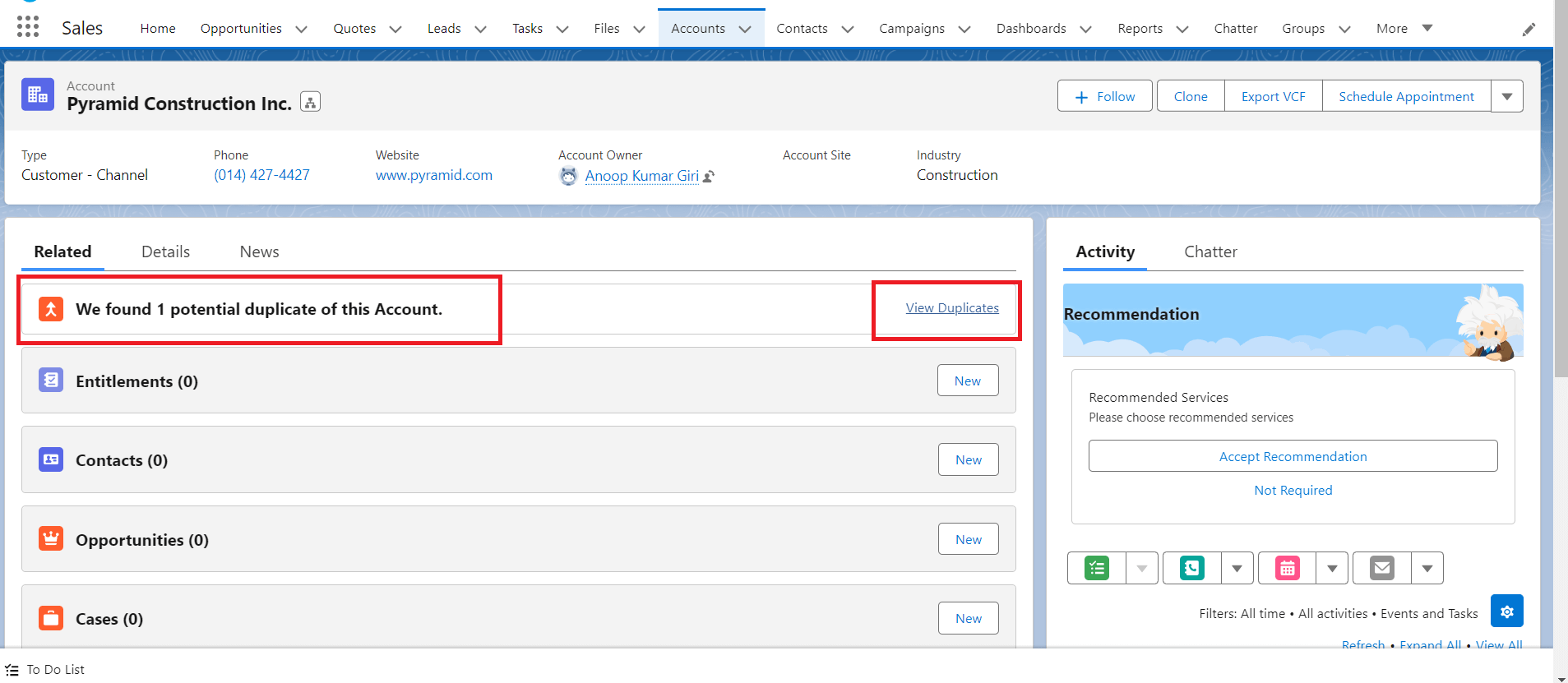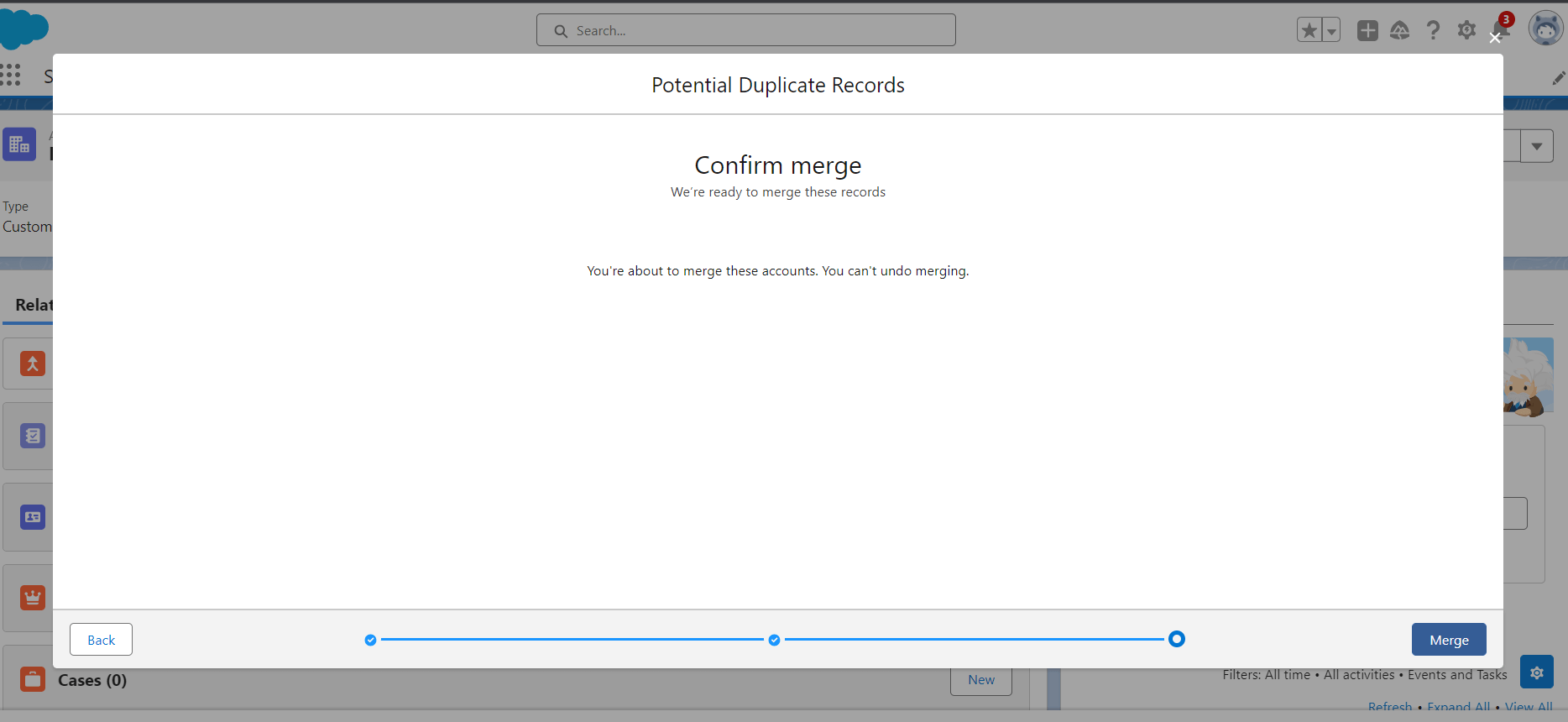Introduction:
As businesses grow and expand, managing customer data becomes increasingly complex. Duplicate records, inconsistent information, and outdated details can hinder productivity and lead to inaccurate insights. Salesforce, a leading customer relationship management (CRM) platform, offers a powerful feature called "Account Merging" to address this challenge. In this blog, we will explore what Account Merging is, its benefits, best practices, and how it helps organizations maintain clean and accurate data.
Understanding Salesforce Account Merging:
Account Merging is a data management feature in Salesforce that allows users to combine duplicate account records into a single, comprehensive entry. This process helps maintain data integrity by consolidating related information, eliminating redundancy, and improving the overall accuracy of customer records.
Benefits of Account Merging:
1. Eliminating Duplicate Records: Duplicate accounts can lead to confusion and errors in sales, marketing, and customer support activities. Merging duplicates ensures there is only one true representation of each customer, avoiding redundant efforts and providing a holistic view of their interactions with the organization.
2. Enhancing Customer Experience: A consolidated and accurate customer profile enables sales representatives and support teams to understand the complete history of interactions with the customer. This knowledge empowers them to deliver personalized and exceptional customer experiences.
3. Streamlined Reporting and Analytics: Clean data means accurate reporting and better insights. By merging duplicate accounts, organizations can access reliable data for analysis, helping them make data-driven decisions to improve business performance.
4. Maintaining Data Integrity: Account Merging ensures that critical customer data, such as contact information, purchase history, and communication preferences, are up-to-date and consistent, reducing the risk of sending communications to outdated or incorrect addresses.
5. Optimizing Storage Space: By removing redundant records, organizations can free up storage space in their Salesforce instance, potentially reducing costs and improving system performance.
Best Practices for Account Merging:
While Salesforce's Account Merging feature is powerful, it's essential to follow best practices to ensure a smooth and accurate merging process:
1. Data Quality Assessment: Regularly audit and analyze your Salesforce data to identify duplicate accounts. Utilize data cleansing tools or validation rules to prevent the creation of duplicate records in the first place.
2. User Permissions: Limit access to Account Merging functionality to trusted users who understand the implications of merging accounts. Implement security controls to prevent unauthorized access.
3. Data Backup: Before initiating the merging process, perform a full backup of your Salesforce data. While Account Merging is reversible within a certain time frame, having a backup adds an extra layer of safety.
4. Merge Strategy: Define a clear strategy for merging accounts. Determine which fields to prioritize and establish guidelines for handling conflicting information during the merging process.
5. Communication: Inform users and stakeholders about the merging process and its potential impact on their workflows. Provide training and support to ensure they understand the benefits and responsibilities of using the Account Merging feature.
How to Use Account Merging:
1. Identify Duplicate Accounts: Use Salesforce's native duplicate management tools or third-party applications to identify potential duplicates based on specific criteria like name, email, or phone number.

Figure 1: Find the duplicate of Account Records using Duplicate Management tool.
2. Review and Compare: Review the duplicate account records to verify that they are indeed duplicates and not related entities with similar information.

Figure 2: Compare the duplicates with each other to verify they are duplicates
3. Initiate Merging: Once you have identified the duplicates, initiate the merging process, and select the master record—the account into which you want to merge the others. Carefully review the information to be merged and resolve any conflicts.

Figure 3: Select which record is going to be Master Record and start the merging Process.
4. Confirm and Complete: After reviewing and confirming the merge, execute the merging process. Salesforce will combine the selected duplicate accounts into the master record, updating the information as needed.

Figure 4: Confirm the Merging Process
5. Post-Merging Validation: After the merge, double-check the master record to ensure that all relevant information is accurate and that no data was lost during the process.

Figure 5: After the merging process check the master records to ensure all relevant information.
Conclusion:
Salesforce Account Merging is a powerful tool that helps organizations maintain clean, accurate, and up-to-date customer data. By eliminating duplicate records and consolidating information, businesses can optimize their operations, deliver better customer experiences, and make informed decisions based on reliable data insights. Implementing best practices and ensuring driving improved business performance and customer satisfaction.data quality will ensure successful and efficient use of the Account Merging feature, ultimately.
For any queries on this reach out to support@astreait.com.